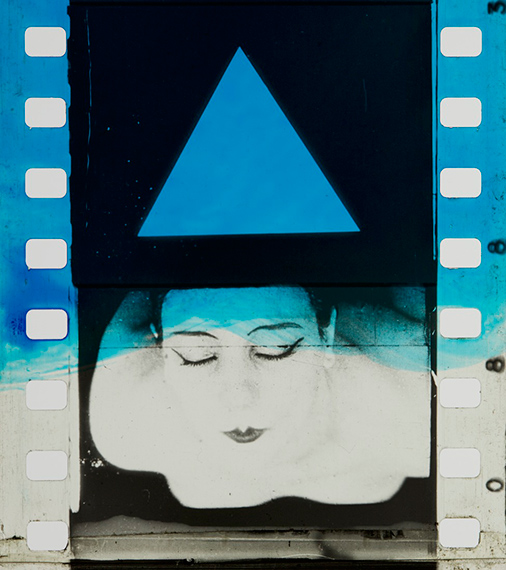
Collection Eye Filmmuseum
Photo: Olivia Kristina Stutz
© Pro Litteris, Zürich, 2019
Color Mania. The Material of Color in Photography and Film
Color Mania - Materialität Farbe in Fotografie und Film
Dunja Evers » Georg Gatsas » Raphael Hefti » Barbara Kasten » Fernand Legér » Alexandra Navratil » & others
Exhibition: 7 Sep – 24 Nov 2019
Fri 6 Sep 18:00
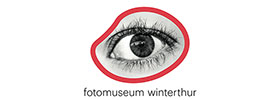
Fotomuseum Winterthur
Grüzenstr. 44+45
8400 Winterthur
+41 (0)52-2341060
info@fotomuseum.ch
www.fotomuseum.ch
temp. closed
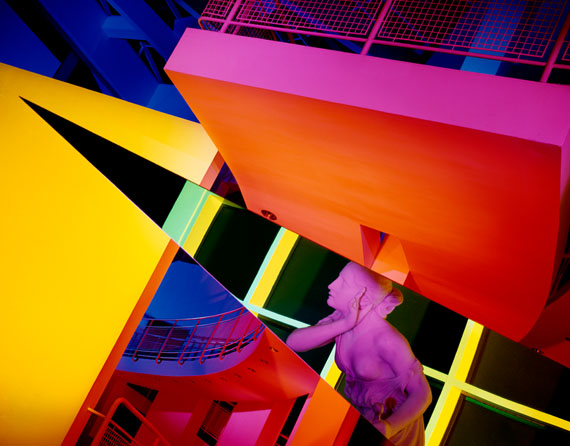
© Barbara Kasten / Kadel Willborn, Düsseldorf
"Color Mania – The Material of Color in Photography and Film"
Exhibition: 7 September – 24 November, 2019
Opening: Friday, 6 September, 6pm
Fotomuseum Winterthur is presenting the exhibition "Color Mania – The Material of Color in Photography and Film". The show exhibits film strips, large-format images and original prints, by which the development and history of color as a material in photography and film are illustrated. Works by contemporary photographers and artists Dunja Evers, Raphael Hefti, Barbara Kasten and Alexandra Navratil demonstrate how historical methods are applied today.
Right from their inception in the nineteenth century, photography and film have been colorful media and art forms, though this is largely unknown to the general public and often overlooked in art historical and academic debates. Color was added to the first photographs, among them daguerreotypes, from 1839 onward and cyanotypes from the 1840s attained their characteristic blue tinge from the chemical reactions of the photographic printing process. Likewise, early cinematic works from the 1890s, such as Loïe Fuller’s dance films, were tinted, toned and hand-colored spectacles.
Since then, a great deal has happened, as in the course of their respective histories photography and film have interacted with one another, while spawning several hundred different color processes. Some of these techniques – including the Autochrome process invented by the Lumière brothers – were developed for photography and subsequently used in film. Others – such as the Gasparcolor process – were initially used in film production and only later applied to photography, marketed, in the case of Gasparcolor, as Cibachrome by the Swiss company Ciba.
"Color Mania" examines the web of connections and processes of exchange between the media of photography and film, shedding light on the material dimensions of photo and film colors and focusing attention on their fascinating abundance. With a variety of original materials and images created with different color processes, the exhibition offers an introduction to the history of color photography and color film, while also giving visitors an aesthetic experience. Such objects as Technicolor originals, hand-colored glass slides and tinted film strips from polar expeditions, which remain for the most part hidden from the public as fragile archival documents, have their own fascinating material aesthetic.
Yet "Color Mania" does not just include exhibits related to historical color film and photography. The historical processes enter into a dialogue with works of art by contemporary artists, which demonstrate how these color processes are utilised today and how the material nature of color, as viewed through the prism of technology and cultural theory, is reflected on in current photography and the broader artistic landscape. In this regard, the works by Dunja Evers, Raphael Hefti, Barbara Kasten and Alexandra Navratil amplify certain aspects explored in the exhibition by means of historical documents and objects. The historical realm is connected here to an experimental and reflective approach drawing on a contemporary perspective.
In her series Portraits and Landscapes, German artist Dunja Evers (b. 1963) deals with the fusion of the media of photography, film and painting. Her focus on color and the techniques of film tinting and hand coloring result in monochrome images coated with an albumen glaze using a wet-on-wet technique and mounted on thin aluminum. Upon closer inspection, the color surfaces give way to what seem to be filmic or photographic scenes.
Experiment and coincidence are central to the work of Swiss artist Raphael Hefti (b. 1978), who investigates traditional photographic processes and chemical materials to determine their material properties and aesthetic potential. In the series "Lycopodium", he takes up the photogram as an early photographic practice, enhancing it by adding "witch powder" – spores of the moss species Lycopodium clavatum – to photosensitive paper. The moss is used both for its pyrotechnic qualities and to produce color effects through a chain reaction taking place as it is highly flammable.
Since the 1980s, American artist Barbara Kasten (b. 1936) has constructed multi-layered installations of colored Plexiglas, mirrors, metal and geometric shapes, which she illuminates from various angles and then photographs. Kasten transposes these staged scenarios, which were initially produced in her studio, into urban space. A selection of the resulting photo series Architectural Sites will be shown as part of "Color Mania".
Swiss artist Alexandra Navratil (b. 1978) pursues artistic research projects on media history and the materiality of photography and film, with a special focus on color and coloring techniques. Her work "All That Slides, Strikes, Rises and Falls" moves from an exploration of the intertwining of the film and textile industries to a study of the tinting process. "Split/Hatch/Mutate/Double", her most recent work, is a 16mm double projection especially created for "Color Mania" that focuses on the early film color method of stencil coloring.
"Color Mania", an art and science exhibition, offers an aesthetic experience that allows for different interpretations and approaches that intersect and merge within the exhibition space. More than a purely chronological history of the evolution of color processes portrayed through the historical exhibits and a systematically elaborated timeline, the contemporary works allow visitors to examine the subject from a modern-day perspective, inviting them to re-examine the historical materials in rewind or in a series of flashbacks. An app has also been developed that provides visitors with additional information on the various film color processes.
The exhibition is curated by Nadine Wietlisbach and guest curator Dr. Eva Hielscher and has been developed in collaboration with Prof. Barbara Flueckiger’s research project ERC Advanced Grant FilmColors. Bridging the Gap between Technology and Aesthetics and SNSF Film Colors. Technologies, Cultures, Institutions at the University of Zurich and with support from the SNSF as an Agora project.
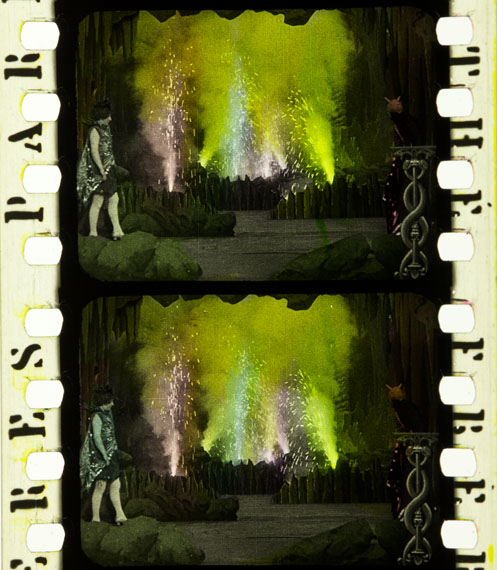
© Fondation Jérôme Seydoux-Pathé. Credit: Library of Congress
Photo: Barbara Flueckiger
"Color Mania – Materialität Farbe in Fotografie und Film"
Ausstellung: 7. September bis 24. November 2019
Eröffnung: Freitag, 6. September, 18 Uhr
Das Fotomuseum Winterthur präsentiert die Ausstellung "Color Mania – Materialität Farbe in Fotografie und Film". Anhand von Filmstreifen, grossformatigen Bildmotiven und Originalabzügen werden die Entwicklung und die Geschichte des Materials Farbe in Fotografie und Film beleuchtet. Werke der zeitgenössischen Fotograf_innen und Künstler_innen Dunja Evers, Raphael Hefti, Barbara Kasten und Alexandra Navratil zeigen zudem, wie historische Verfahren heute Anwendung finden.
Fotografie und Film sind seit Beginn ihres Entstehens im 19. Jahrhundert farbige Medien und bunte Kunstformen, auch wenn dies beim breiten Publikum wenig bekannt ist und in kunsthistorischen und wissenschaftlichen Debatten häufig übersehen wird. Frühe Fotografien wie beispielsweise Daguerreotypien wurden bereits ab 1839 koloriert, Cyanotypien erhielten in den 1840er-Jahre durch chemische Reaktionen des Edeldruckverfahrens ihre typisch blaue Farbe und Filme in den 1890er-Jahren, wie die Tanzfilme Loïe Fullers, waren bereits handkolorierte Spektakel.
Seitdem hat sich viel getan, denn im Laufe ihrer Geschichte brachten Fotografie und Film mehrere hundert Farbverfahren hervor und beeinflussten sich dabei häufig gegenseitig. Einige der Techniken – wie die Autochrome der Brüder Lumière – wurden zunächst im Rahmen der Fotografie entwickelt, bevor sie auch im Film Anwendung fanden. Andere – wie das Farbfilmverfahren Gasparcolor – wurden zunächst in der Filmproduktion genutzt und bahnten sich später – in diesem Falle als Cibachrome der Schweizer Firma Ciba – ihren Weg in die Fotografie.
"Color Mania" betrachtet diese Verflechtungen und Austauschprozesse zwischen Fotografie und Film, beleuchtet die materielle Dimension der Foto- und Filmfarben und rückt deren faszinierenden Reichtum in den Fokus. Durch verschiedene Exponate originaler Materialien und Bilder diverser Farbprozesse gibt die Ausstellung eine Einführung in die Geschichte der Farbfotografie und des Farbfilms und schafft für die Besucher_innen zudem ein ästhetisches Erlebnis. Ausstellungsstücke wie Autochrome, Technicolor-Originale, handkolorierte Glasdias und viragierte Filmstreifen von Polarexpeditionen, die dem Publikum weithin als fragile Archivalien verborgen bleiben, besitzen eine ganz eigene faszinierende Materialästhetik.
Doch "Color Mania" ist nicht bloss eine Ausstellung historischer Farbfotografie- und Farbfilmexponate. Denn die historischen Verfahren treten in Dialog mit Kunstwerken zeitgenössischer Kunstschaffender, die zeigen, wie diese Farbprozesse heute Anwendung finden und wie technische und kulturtheoretische Aspekte des Materials Farbe in der aktuellen Fotografie und erweiterten Kunstlandschaft reflektiert werden. So erweitern die Arbeiten von Dunja Evers, Raphael Hefti, Barbara Kasten und Alexandra Navratil ausgewählte Aspekte, die in der Ausstellung mittels historischer Exponate thematisiert werden. Das Historische verbindet sich hier mit einer experimentellen und reflexiven Annäherung aus der Gegenwart.
Die deutsche Künstlerin Dunja Evers (*1963) setzt sich in ihren Werkgruppen Portraits und Landschaften mit der Verschmelzung der Medien Fotografie, Film und Malerei auseinander und stellt dabei Farbe und die Techniken der Virage und Handkolorierung in den Mittelpunkt. Das Ergebnis sind monochrome Bilder, nass in nass mit Eiweisslasur bestrichen und auf dünnem Aluminium aufgezogen, aus deren Farbflächen sich, auf den zweiten Blick, filmisch und fotografisch anmutende Szenen herausschälen.
Das Experiment und der Zufall sind zentrale Momente im Werk des Schweizer Künstlers Raphael Hefti (*1978), der tradierte fotografische Verfahren und chemische Werkstoffe auf ihre Materialeigenschaften und ästhetische Potenziale hin untersucht. In der Serie "Lycopodium" greift er das Fotogramm als frühe fotografische Praxis auf, erweitert es durch das Hinzufügen der Moosart Lycopodium clavatum, die für pyrotechnische Effekte genutzt wird, und erzeugt durch eine Kettenreaktion des leicht entflammbaren Mooses bunte Farbeffekte auf der fotosensiblen Schicht.
Ab den 1980er Jahren konstruierte die amerikanische Künstlerin Barbara Kasten (*1936) aus farbigem Plexiglas, Spiegeln, Metall und geometrischen Formen mehrschichtige Installationen, die sie aus verschiedenen Blickwinkeln belichtete und abfotografierte. Die Inszenierungen, welche zunächst in ihrem Studio produziert wurden, übertrug Kasten in den urbanen Raum. Eine Auswahl der daraus entstandenen Fotoserie Architectural Sites wird im Rahmen von "Color Mania" gezeigt.
Die Schweizer Künstlerin Alexandra Navratil (*1978) betreibt mit ihren Werken künstlerische Forschungsprojekte zur Mediengeschichte und Materialität von Fotografie und Film, mit einem speziellen Blick auf Farbe und Kolorierungstechniken. So erforscht sie mit "All That Slides, Strikes, Rises and Falls" neben der Verflechtung der Film- zur Textilindustrie auch den Prozess der Virage, und widmet ihre neueste Arbeit "Split/Hatch/Mutate/Double", eine 16mm-Doppelprojektion speziell für "Color Mania" entstanden, dem frühen Filmfarbverfahren der Schablonenkolorierung.
"Color Mania", eine Kunst- und Wissensausstellung, bietet eine ästhetische Erfahrung, die verschiedene Lesarten und Zugänge zulässt, die sich im Ausstellungsraum überkreuzen und verbinden. Mehr noch als eine rein chronologische Entwicklungsgeschichte der Farbverfahren, die sich über die historischen Exponate sowie in Form eines systematisch aufgearbeiteten Zeitstrahls abbildet, ermöglichen die zeitgenössischen Werke auch den Einstieg aus heutiger Sicht – mit der Einladung, im Rückwärtslauf beziehungsweise in Rückblende zu historischen Elementen zurückzukehren. Zudem wurde eine App entwickelt, die den Besucher_innen Zugang zu weiterführenden Informationen zu den unterschiedlichen Farbfilmverfahren ermöglicht.
Die Ausstellung wird kuratiert von Nadine Wietlisbach und Gastkuratorin Dr. Eva Hielscher und wurde entwickelt in Kooperation mit Prof. Dr. Barbara Flückigers Forschungsprojekten ERC Advanced Grant FilmColors. Bridging the Gap between Technology and Aesthetics und SNF Filmfarben. Technologien, Kulturen, Institutionen der Universität Zürich und mit Unterstützung des SNF als Agora-Projekt.
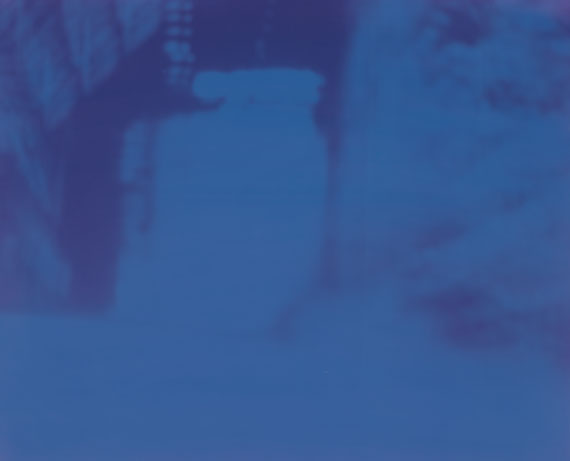
© Dunja Evers (Collection Fotomuseum Winterthur)
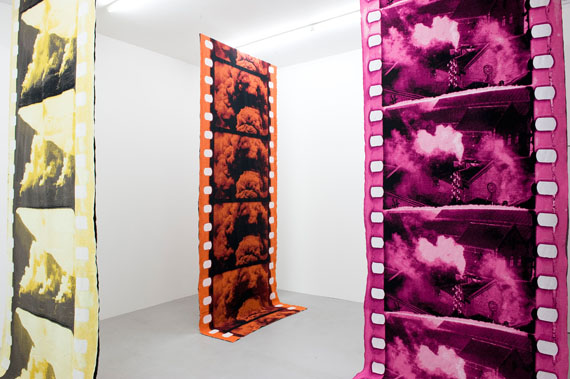
© Alexandra Navratil / Dan Gunn Gallery, London
Photo: Installation view BolteLang, Zurich © Alexander Hana